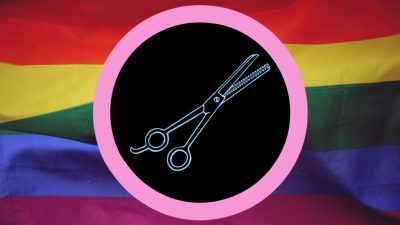Pour-Over Economics: On Starbucks and Gentrification


Coffee City (Image: Serial Optimist)
Last week, a commenter on my article “The Starbucks Is Not the Problem” raised an interesting point:
Café Grumpy, Gimme! Coffee, Momofuku Milk Bar, [and] other indie cafes do not hire inner city minorities. Most hire only the hipster, young, attractive, white, transplant from [the] suburban Midwest who think and act as if they are god’s gift to the gentrified neighborhood.
Regional origins notwithstanding, it’s true that many independent coffee shops in New York City are staffed with young, often attractive, overwhelmingly white baristas, many of whom are transplants, college-educated or no. In any one of the 256 Starbucks stores in the five boroughs, you are far likelier to see people of color at every level of employment. And with news last month of a new college tuition program for Starbucks employees, the question of what to think of the green giant’s nonstop expansion is becoming harder to answer.
Like many publicly traded US corporations, Starbucks champions diversity among its “partners” (as all Starbucks employees are known), and has created “partner networks” focused on minority interest groups both racial and cultural. All this is admirable, and doubtless beneficial to the work environment, but it is also Corporate Image 101. It may be too cynical to dismiss these efforts completely as nothing more than glad-handing and face-saving—after all, CEO Howard Shultz famously brushed off one shareholder’s objections to the company’s support for same-sex marriage legislation in Washington state.
But whether or not diversity is just for show, Starbucks has committed to addressing another axis of diversity: education. The company announced its College Achievement Plan (CAP) in partnership with Arizona State University (ASU) Online, which, through a combination of need-based scholarship aid, tuition discounts, and employee reimbursements, will allow US-based employees of Starbucks (as well as Teavana, La Boulange, Evolution Fresh, and Seattle’s Best Coffee, which are subsidiaries) to earn an undergraduate degree at reduced out-of-pocket cost—at least in theory. Starbucks promises “full tuition reimbursement” to employees who have already completed their freshman and sophomore years of college; freshman and sophomores who enroll at ASU Online will receive “a partial scholarship and need-based financial aid,” according to Starbucks’ website.
The program has been roundly criticized, beginning with the revelation that ASU, not Starbucks, will shoulder much of the cost of reduced tuition—to the tune of around $24 million, compared to Starbucks’ $11 million, according to Quartz—which has sapped the program of some of its perceived generosity. Adding to the backlash is the fact that ASU’s base tuition costs are higher than most public undergraduate programs, at $480–$543 per credit compared to, say, $260 per credit for New York state residents at Brooklyn College.
But despite the program’s flaws, demand remains (potentially) high: According to the Chronicle of Higher Education, Starbucks reports that only about one-quarter of its US workforce of 135,000 holds a bachelor’s degree, while close to 70 percent are either currently working toward one or plan to in the future. Looking at these figures, Starbucks’ education program is right-minded, if nothing else, especially considering that employees who participate are not obligated to remain with the company upon completion of their degree.
Moreover, that an estimated three-quarters of Starbucks employees do not have a bachelor’s degree—and that Starbucks has a program in place to help those who want one get there—is significant to any conversation about the coffee giant’s role in gentrification, particularly in Williamsburg. As I noted last week, “chainification” is often decried as the final nail in the coffin of a changing neighborhood, bringing Frappuccinos® and Coolattas® where there had been only the hardscrabble authenticity of cold brew. And while beards and latté art might seem like the sort of homegrown food-craft that is “so Brooklyn,” what’s even Brooklyn-er is Brooklynites making a better-than-minimum-wage living in Brooklyn, which not many working-age natives of Williamsburg, Greenpoint, Crown Heights, Flatbush, or Red Hook can do at Blue Bottle.
Now, with potentially another Starbucks opening on the northside, the question of what it means is even more pressing. It’s easy to denounce Starbucks as synecdoche for gentrification’s ills, but looked at another way—with an eye to who is being served by coffee retailers on both sides of the counter—such a chainifying force may be the only hope for redemption in a process already too far gone.
You might also like 




















